Power of the Permian
A Record Year for America’s Energy Independence and Economic Growth



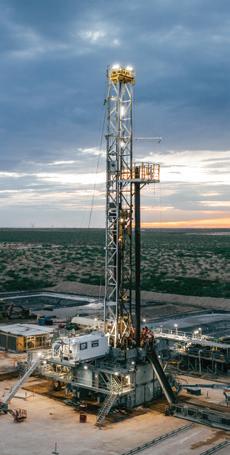









The Permian Basin is one of the most vital oil-producing regions in the world. Spanning 86,000 square miles 1 across West Texas and Southeastern New Mexico, the Permian makes an outsized contribution to local, state, national, and global economies—and plays a critical role in supplying worldwide energy needs. Over the past year, the economic, fiscal, and strategic importance of the Permian Basin has only grown.
Oil and gas production in the Permian reached record levels in 2022. Combined with high commodity prices, the result was a significant increase in tax revenue for state and local governments in Texas and New Mexico, as well as the federal government. More importantly, the region’s robust production and revenue last year further strengthened energy security for the United States and our global allies.
The Permian Basin’s influence and economic impact extends across the United States and around the globe. In fact, if the region was a country, it would be the third-largest oil producer in the world. Beyond oil and gas, the Permian is also a significant producer of renewable energy, with wind and solar production growing in Texas and New Mexico. In addition, the region remains a major contributor to liquified natural gas (LNG) exports, with pipelines and production facilities well positioned to connect local supply with global demand.
Securing America’s energy independence, and our future, begins right here in the Permian Basin. In a fluid and complex geopolitical environment—with challenges like the Russian invasion of Ukraine, the climate, and growing global energy needs—the Permian Basin remains a fortress of stability and opportunity.
To ensure that the region’s influence continues to grow, strategic investments and responsible development in the Permian are critical. The region’s core advantages—rich natural resources, welldeveloped infrastructure, innovative technologies, a skilled labor force—must be prioritized and protected with an eye to the long horizon. By doing so, the Power of the Permian can be harnessed to help meet the world’s energy needs, drive economic growth, and strengthen our national security for decades to come.

America needs reliable energy, and the Permian Basin has provided it for many years. The region’s vast reserves hold more than 105 billion barrels of oil and about 229 trillion cubic feet of natural gas 2, with an estimated gross value of almost $1.9 trillion. The Permian produces low-carbon oil that is cleaner and more environmentallyfriendly than other areas—and the region has established itself as a leading producer of renewable energy.
Oil production in the Permian Basin rose to 1.85 billion barrels in 2022, and is projected to continue climbing. Meanwhile, natural gas production reached 7.5 trillion cubic feet in 2022. About 73% of Texas oil production and 47% of Texas natural gas production takes place in the Permian Basin. In New Mexico, 98% of oil production and 77% of natural gas came from the Permian in 2022 3
The Permian is uniquely positioned given its massive, untapped remaining resources and competitive breakeven prices.
The oil produced in the Permian is cleaner than oil produced elsewhere in the world. Paired with the wind and solar resources produced in the region, the Permian makes a significant contribution to the renewable energy sources of the United States. Texas has the highest installed wind capacity among all U.S.
states, and is expanding its wind power facilities at a faster rate than other regions. The wind power capacity in the Permian area makes up ~3% of the U.S.’s total wind power capacity, and has more than doubled over the last ten years 5. The Permian makes up ~8% of the U.S.’s total solar plant capacity 6. Texas ranks second to California in solar capacity but is estimated to surpass California’s capacity by 2024 7
Permian Basin production also supports the export of liquefied natural gas (LNG) and crude oil, which positively impacts the balance of trade for the United States. Pipelines throughout the region are well connected to strategic areas where LNG facilities are located, positioning the region for the creation of a global market through LNG exports. This could have significant energy security and geopolitical consequences.
Note: Countries ordered by amount of untapped oil resources. Breakevens show average Brent prices for new oil projects. Source: Rystad Energy
According to estimates from The Perryman Group, the natural gas resources from the Permian Basin contributed more than 2.3 trillion cubic feet to U.S. LNG exports in 2022, resulting in a positive impact of approximately $22.4 billion on the U.S. balance of trade. Moreover, the export of crude oil from the Permian Basin also enhances the balance of trade, with an estimated benefit of approximately $78.9 billion in 2022. In total, resources from the region contributed more than $100 billion in trade benefits during the period, while simultaneously generating billions of dollars in fiscal benefits.
By 2050, the world will require almost 50% more energy than what is produced today. With responsible investment and development, the Permian Basin has the power to deliver and play a critical role in supplying global needs.

Each year, the Permian Basin provides billions of dollars in tax and royalty revenues to federal, state, and local governments—and in 2022, the region made its largest contribution yet. Over the past year, the Permian Basin contributed $18.4 billion in total taxes to the State of Texas and $6.1 billion to New Mexico. This revenue will play a direct role in supporting essential services such as public education, teaching, police and fire protection, community hospital care, college and university education, and road improvements.
Above and beyond oil and gas tax revenues, the industries in the Permian Basin also provide thousands of jobs annually, sustaining families and local businesses and driving economic growth in West Texas and Southeast New Mexico. This economic stimulus extends throughout the entire U.S. economy and across various major industries. According to estimates by the Perryman Group, factoring in multiplier effects, the total annual economic benefits of oil and gas activities in the Permian Basin include $148.6 billion in gross product and 577,900 jobs in Texas, $22.1 billion in gross product and 135,300 jobs in New Mexico, and $181.8 billion in gross product and over 786,200 jobs across the United States.
In addition to being a crucial source of fuel, the Permian Basin serves as an agriculture hub that provides food and fiber. A notable proportion of Texas sheep and cotton production occurs in the region, with wheat and cattle also having a presence in the region. The Perryman Group estimated the annual economic benefits of the region’s agriculture industry to include $2.6 billion in gross product and nearly 24,600 jobs in Texas, with $1.1 billion in gross product and over 10,700 jobs in New Mexico (including multiplier effects).
Moreover, the Permian Basin provides a trade advantage on a global scale, as its output and energy exports contribute to improving the U.S. international trade balance.
Energy is essential to national security—and the Permian has been a reliable and secure energy source for many years. Strong work ethic and innovation in technology grew the Permian six-fold from the early 2000s to today. With its vast oil and gas resources and growing leadership in the renewable energy market, the region plays an important role in fortifying America’s energy and economic future.
Global energy shortages, economic crises, and political instability have the potential to impact every country in the world, including the United States. However, by focusing on our strengths and strategically investing in areas critical to our energy infrastructure, we can minimize economic fluctuations and security gaps. Therefore it is imperative to invest in the Permian Basin’s infrastructure—including roads, schools, workforce development, and healthcare—to prioritize and safeguard our natural resources and human capital.
The Permian Basin is experiencing economic growth and an expanding workforce, attracting more families seeking new opportunities. As the demand for essential services increases, our physical and civic infrastructure is becoming strained and requires substantial investment. Many roads in the Permian Basin are inadequate to safely accommodate higher traffic volumes. Public schools are under-performing, overcrowded, and need better resources to attract and retain qualified teachers. Access to reliable broadband service, now considered a basic public utility for families, students,
and remote workers, is lacking in many rural areas. Furthermore, quality healthcare services need expansion to keep individuals and families healthy, and to ensure our Permian workforce receives the care they need.
The people who live and work in the Permian Basin are the backbone of the region and a critical reason for our success. Investing in the Permian Basin strengthens America’s energy and economic security, and supports the livelihoods and wellbeing of those whose commitment and hard work will determine our future. The Permian Basin makes an incredible contribution to the country’s federal, state, and local governments, supporting schools, hospitals, roads, and other critical needs. The people who live and work in the region need and deserve access to high-quality education, healthcare, and infrastructure resources. Following a record year for the oil and gas industry, the time is now to provide record-level support to sustain the region for decades to come.
The Permian Basin had a banner year, with the region contributing billions of dollars, thousands of jobs, and unparalleled energy production to Texas, New Mexico, and the United States. With deep reserves and flourishing renewable resources, the Permian has the potential to produce abundant energy, drive economic growth, and strengthen national security for generations to come.
To ensure our shared prosperity tomorrow, we must invest in the Permian today.
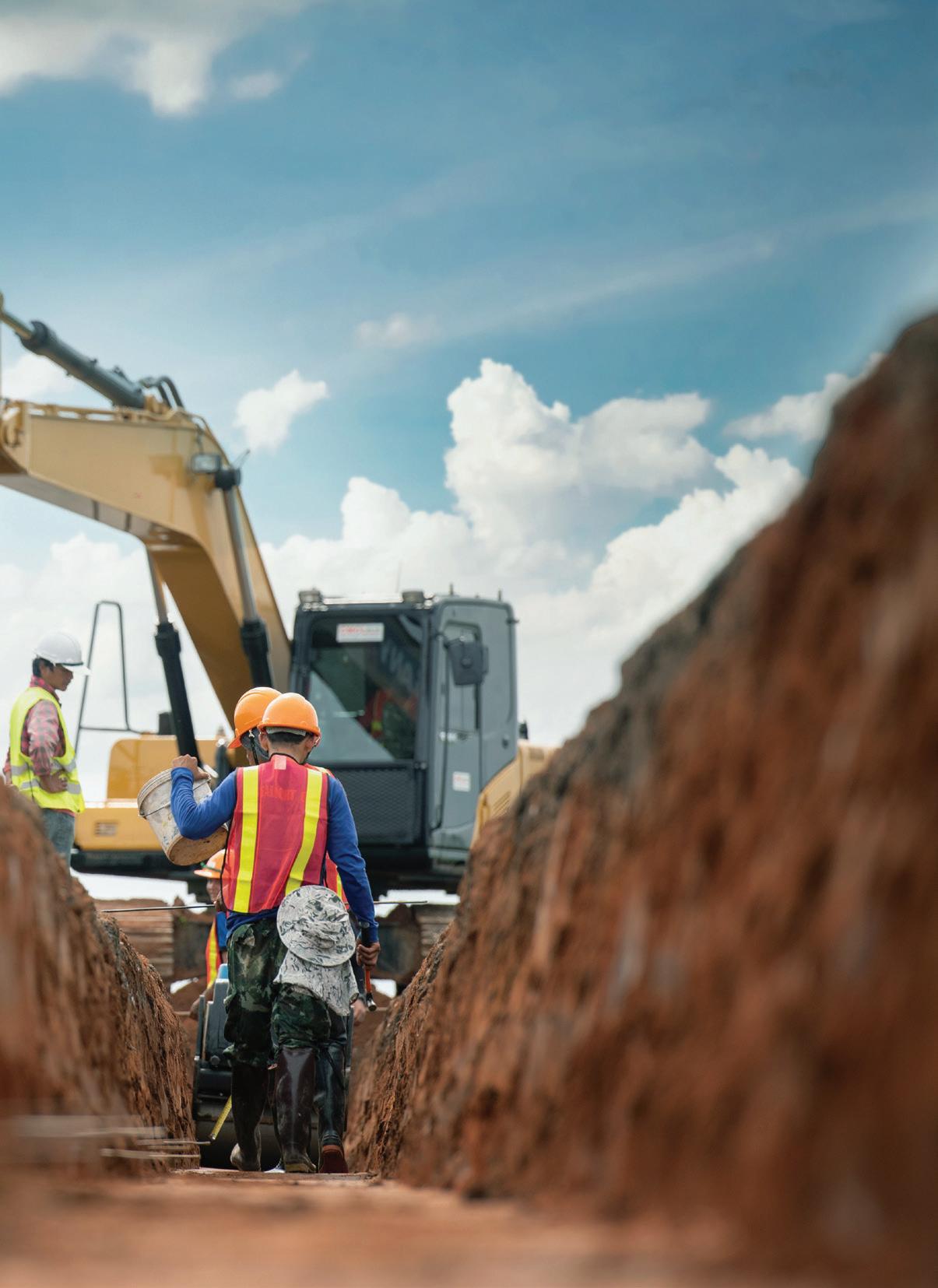
The Permian Basin is one of the top energy-producing regions in the world. With abundant natural and renewable resources, the region boosts economic growth, job creation, and education in Texas and New Mexico, and supports U.S. economic growth and energy security.
The Permian Basin Holds Benefits to Texas and New Mexico
105 billion Barrels of Recoverable Oil8
229 trillion ft3 of Recoverable Natural Gas
The Permian Basin is home to:
1.6% of Texas’ Population
9.3% of New Mexico’s Population9
But contributes approximately:
8.2% of Texas’ Private Sector GDP
26.5% of New Mexico’s Private Sector GDP
577,900 Jobs in Texas $18.4b in 2022 Texas Tax Collections
135,300 Jobs in New Mexico $6.1b in 2022 New Mexico Tax Collections
For every resident in Texas, oil and gas activity in the Permian Basin and related collateral activity generates:
$18,017 in Spending
Per Capita
Annual Impact
National Impact Projected Impact
$4,949 in Gross Domestic Product
$1,430 in Income
For every resident in New Mexico, oil and gas activity in the Permian Basin contributes to:
$31,558 in Spending
$10,441 in Gross Domestic Product
$4,709 in Income
Across the United States, oil and gas activity in the Permian Basin contributes to:
$181.8b
Per Year in U.S. Gross Domestic Product
786,200 U.S. Jobs
$34.0b in 2022 U.S. Tax Collections
The Perryman Group estimated the projected total economic impact of the Permian Basin in 2050 to be:
Texas New Mexico United States
$177.9b $268.6b in Gross Product
642,200 896,400 Jobs
$26.8b $40.5b in Gross Product $215.7b $325.7b in Gross Product
158,600 221,400 Jobs
870,324 1,214,828 Jobs
The Permian Basin plays a crucial role in securing the world’s energy future. With recent technological advancements and renewable resources, the region can continue to do so while assisting efforts worldwide to combat climaterelated issues. As the leading oil and gas producer globally, the United States relies heavily on the Permian Basin, which generates nearly 45% of its oil production and is projected to be 50% by 2026 10. Moreover, the area serves as a significant hub for renewable energy sources and cutting-edge technologies that help drive global energy production. By 2050, the world is projected to need 50% more energy, as compared with 2020 11, and oil and natural gas will continue to be major energy sources, along with renewable energy.
The Permian Basin holds immense strategic importance in meeting the world’s current and future energy needs, bolstering America’s energy security, and improving the nation’s trade balance through energy exports. Current production in the region is at record levels for both oil and natural gas, underlining its importance in meeting global energy needs.
When analyzing monthly oil and gas production in the Permian Basin since 2019, the impact of the COVID-19 pandemic and winter storms is evident. Even so, annual production has continued along an overall upward trend over the past few years, with significant benefits to the U.S. economy. The Permian Basin’s annual oil production has increased to 1.85 billion barrels in 2022, up from 1.63 billion barrels in 2020. Natural gas production has accelerated even faster, increasing to 7.5 TCF (trillion cubic feet) in 2022, up from about 6.2 TCF in 2020.
Rig counts are robust, although we have yet to reach pre-COVID levels. At the start of 2019, the Permian Basin was home to nearly 500 rigs, but by August of 2020, that number had dropped to just 117. Since then, numbers have been steadily increasing, averaging 350 since year-end 2022.
Beyond traditional oil and gas supply, the Permian Basin is also a major player in Liquefied Natural Gas (LNG) and crude oil exports, a segment of the international energy markets which is growing in
PRODUCTION FOR THE PERMIAN HAS INCREASED FROM 1.63b 1.85b
Barrels from 2020 to 2022
importance. Permian Basin resources contributed over 2.3 trillion cubic feet of LNG exports in 2022, providing $22.4 billion to the U.S. balance of trade. The Texas Gulf Coast is an ideal location for LNG transport. Because of the Permian Basin’s strategic position, wellconnected pipelines, and ideally located natural gas resources, the region is positioned to take on a critical role in sustaining a global market for LNG exports.
This leadership role is essential, considering current geopolitical challenges, like the energy crisis in Europe and the Russian invasion of Ukraine. To illustrate the point, if LNG supply could be expanded to meet Europe’s energy needs, Russia’s ability to leverage energy resources to increase its power would be greatly reduced. Today, the U.S. is the world’s top exporter of LNG, and the Permian leads the way. About 47% of natural gas produced in Texas in 2022 was produced in the Permian Basin.
With its abundant oil and gas reserves, clean energy options, and potential for LNG supply, the Permian Basin is in a prime position to meet the world’s growing energy demands and promote economic growth and prosperity. Additionally, the region’s commitment to addressing climate change and ensuring energy security further enhances its potential to become a significant player in the global energy landscape.
6.2 TCF 7.5 TCF
Clean energy is essential to meeting global energy needs while addressing climate challenges—and the Permian Basin is a growing source of renewable energy.
One of the most appealing aspects of Permian Basin oil is its low carbon footprint compared to other crude oil sources. Oil produced in the Permian, when combusted, emits 22.8% less carbon dioxide (CO 2) than oil produced elsewhere in the world. CO 2 emissions are 57.6% less than oil from the Middle East, and 74.4% less than tight sand oil formations. The CO 2 emissions in Permian oil is also significantly less than Mayan oil from Mexico, and oil produced in Nigeria 12. Simply put, no other major onshore formation can compare to the Permian Basin complex when it comes to low carbon characteristics.
When compared to equivalent energy sources, oil from the Permian also stands out. The region has 42.5% lower CO 2 emissions than coal, while the remainder of oil in the world is only 25.2% cleaner than coal. Natural gas emissions are 46.2% lower than coal—and when carbon capture technology is used, emissions are 60% lower.
Renewables comprised 15% of global energy consumption in 2020, and this category is expected to increase to 27% by 2050, becoming the second-most utilized energy source after petroleum and other liquid fuels. Over the past decade, the Permian Basin has increased its renewable energy capacity as demand has grown, especially in Texas. In 2010, combined wind and solar power made up 7.8% of overall power generation in Texas. The percentage climbed to 30% by 2022 13. In 2022, Texas had the highest installed wind capacity of all U.S. states at 36.8 GW – more than 3x the next largest state of Iowa at 11.8 GW 14. Texas is also building new facilities faster than other states 15. In fact, there are only four countries with higher installed wind capacity than Texas: China, the United States, Germany, and India 16. New Mexico ranks sixth in wind capacity 17
Texas is also growing its solar capacity. The state soared to 8,820 MW installed, up from 4,869 MW in 2020 18. Texas will add 7.7 GW of capacity in 2023, and over the next two years, one-third of the solar capacity planned to come online in the U.S. will be in Texas 19
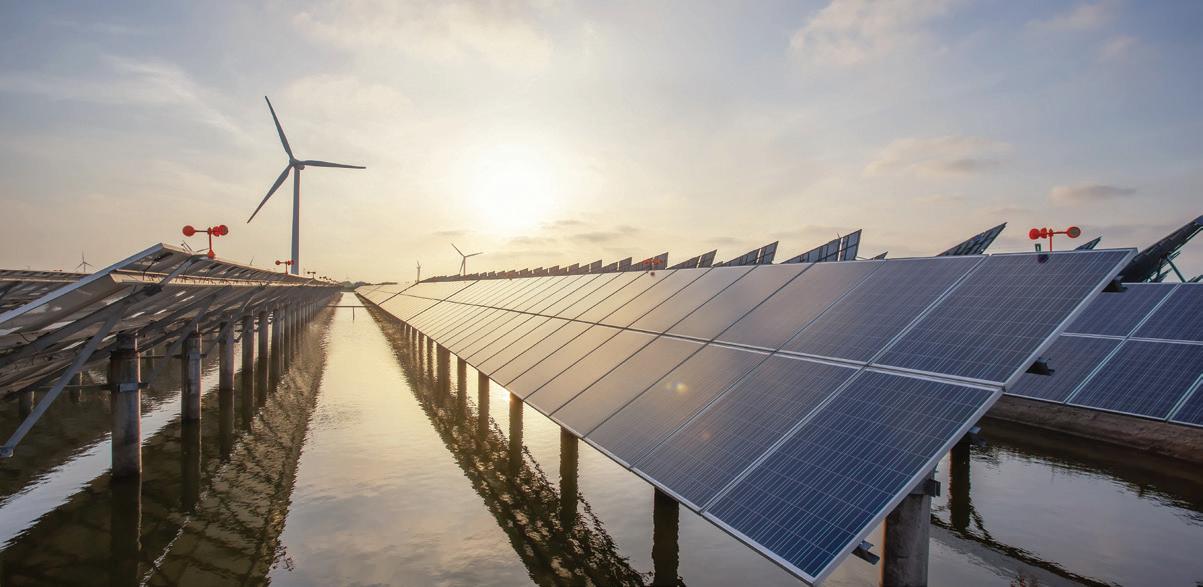
Within the Permian as a whole, wind capacity has grown from less than 1,664 MW in 2010, to 4,511 MW in 2022. 20 Solar capacity in the region has now reached 4,582 MW, and more solar projects in the Permian Basin are expected in the future.
When we talk about capacity, we are measuring the maximum electricity output of facilities. Generation, on the other hand, describes the amount of energy actually produced and delivered. In 2022, Texas wind generation reached 113,880 thousand megawatt hours, comprising 26.2% of the U.S. total. Solar generation in the state was 22,238 thousand megawatt hours in 2022, making up 15.3% of the national total 21
Beyond solar and wind energy in the Permian, another key development occurred when the Texas legislature designated the area as a “Competitive Renewable Energy Zone”, enabling transmission lines to provide renewable power across the state.
Because of the Permian Basin’s climate, landscape, and available land, solar and wind energy—along with its rich resources, strong infrastructure, and history of innovation in the energy sector—the region’s position as a clean energy leader will continue to grow.
WIND ENERGY PRODUCTION
Data only includes areas in the states’ main electricity markets. Counties in light grey are outside of the markets.
WIND POWER CAPACITY
0 MW
2,085 MW
SOLAR ENERGY PRODUCTION BY COUNTY
Solar farms have been built across the states’ main electricity grid. Data only includes areas in the states’ main electricity markets. Counties in light grey are outside of the markets.
SOLAR POWER CAPACITY
0 MW
1,607 MW
Note: ERCOT defines one megawatt (MW) as enough to power about 200 Texas homes during high demand. Data is limited to ERCOT operating areas only and includes additional capacity that will be connected to the grid in 2023.
Source: Rystad Energy, ERCOT and Texas Tribune
The Permian Basin has long been a destination of choice for workers and families seeking new opportunities. With a growing influx of people moving to the Permian Basin, in response to a strong job market and expanding economy, the region’s core infrastructure has become strained. More people in the Permian means heavier traffic on the roads, as residents travel daily to work, school, and other locations throughout the region. This increase in use has prioritized the need for accelerated infrastructure investment including building new roads, repairing existing roads, and ensuring all structures are adequate and safe to meet ongoing needs.
There are over 17,000 centerline miles of roads in the Permian Basin, including highways. When these roads were first built, the region was much smaller and more rural than it is now. As economic activity has picked up in the Permian, roads are getting heavy use from commercial vehicles and large trucks transporting supplies into and out of job sites. Currently, approximately 150,000 commercial trucks are on Permian roads each day 22 . This has created unsafe road conditions and led to an increase in accidents and injuries. In 2022, fatalities across the Permian increased by over 18 percent from 2021 23
A recent study from Texas A&M University highlighted the potential impact of infrastructure investment, and pointed toward potential solutions. The study showed that a $1 billion investment in the Permian Basin’s transportation infrastructure, including widening roads and adding passing or turn lanes, could prevent more than 4,000 crashes over a 30-year period. The investment would also reduce traffic delays by more than 270,000 hours each year.
To address these concerns and increase awareness about the Permian Basin’s benefits to Texas and New Mexico, the Texas Department of Transportation, under the leadership of Chairman Bruce Bugg, created the Permian Promise program, bringing needed resources to Permian infrastructure that will improve safety and the efficient movement of freight for citizens and private industry alike. This program has increased highway funding for Permian Basin priority projects, gained wide support from elected officials and policymakers at all levels of government, and funded investments in road safety and energy roads.
Raising awareness of road safety concerns can also help to prevent crashes. Permian Basin communities can play a role in reducing fatalities by making traffic safety education a priority and encouraging caution as highway improvement projects are underway.
The Permian Strategic Partnership advocates for infrastructure improvements that will reduce road accidents, increase safety, and improve quality of life for Permian drivers.

I 20
SH 302
US 285 North
US 285 South
Pecos Relief Route
SH 18 North
SH 18 South
SH 115 North
SH 115 South
SH 176 West
SH 176 East
SH 349
US 285/NM 31 Intersection
US 380 Corridor
NM 128 MP 50.7-53.9
NM 31 MP 0.5-8
NM 31/NM 128 Intersection
NM 128 MP 1-11.8
NM 128 MP 11.8-50.7
NM 128 MP 53.9-59.9
NM 31 MP 8-22.7
US 62 MP 67.96-97.08
US 62 MP 74-83
NM 18 MP 6.5-24
US 82 MP 147.5-155.5
Just as roadways and highways are critical for transporting people and goods, internet connectivity is essential for transmitting information and enabling communication. Students, families, and remote workers need reliable internet service to work, learn, and access services, including tele-medicine. With this need in mind, the Permian Strategic Partnership is also focused on information technology infrastructure investment.
The Texas Broadband Development Office and the New Mexico Office of Broadband Access and Expansion are actively engaged in efforts to improve broadband connectivity across both states. Recently, the federal government provided $368 million to Texas and $123 million to New Mexico to support middle and lastmile projects.
In June of 2023, the National Telecommunications and Information Administration (NTIA) announced grants of $930 million to expand middle mile high-speed internet infrastructure across 35 states and Puerto Rico. Eastern New Mexico Rural Plateau Communications received $49.9 million to expand broadband across Southeast New Mexico and West Texas. Counties impacted in the Permian Basin include Eddy, Lea, and Chaves counties in New Mexico, and
Culberson, Reeves, Ward, and Wink counties in Texas. On June 26, 2023, the NTIA announced the release of $42.45 billion from the Infrastructure Investment and Jobs Act (IIJA) Broadband Equity Access and Deployment Program (BEAD). Of this amount, Texas was awarded $3.3 billion and New Mexico was awarded $675 million. Most of the projects are expected to begin in late 2024, with completion expected by 2026. We believe that the Permian Basin is well-positioned to receive a significant investment in broadband infrastructure. The program is designed to address unserved and underserved locations. Also, PSP and local school districts have partnered with SpaceX as a pilot to almost 200 families in the Permian to pave the way for costeffective solutions.
To best serve the interests of those who call the Permian Basin home, access to safe roads and reliable utilities that are essential for school, work, and daily life is paramount. We are grateful for recent investments in infrastructure, road safety, and telecommunication networks across Texas and New Mexico, and we know that these investments will increase quality of life in the region. However, there is still work to be done. To ensure everyone in the Permian Basin has the resources to survive and thrive, strategic infrastructure planning and ongoing investment are critical.
Safe roads. Strong schools. Healthy state budgets. All are made possible by a strong economy and well-funded state governments—and all are supported by the oil and gas resources in the Permian Basin. The past year was one of the best in the history of the region: the combination of high production and high commodity prices led to new records set in oil and gas tax revenues, creating unprecedented budget surpluses in Texas and New Mexico, and contributing billions to federal, state, and local governments.
Total tax collections from direct and indirect sources from Permian Basin oil and gas activity include an estimated $18.4 billion for Texas and $6.1 billion for New Mexico in 2022 24. These funds support tax relief, road improvements, public schools and teachers, police and fire departments, community hospitals, universities, road improvements, and other essential services.
Royalties are an important contributor to state revenue. In 2022, the Permian Basin contributed $2.1 billion in royalties to the state of Texas through the Texas Permanent University Fund 25—more than double the 2021 amount of $979 million. In Texas, these royalties are allocated to various funds that support education, highway construction and maintenance, and state parks and wildlife. In recent years, the revenues generated from mineral rights have increased due to the growth in production from horizontal drilling.
The region also contributed nearly $2.2 billion in royalties to New Mexico, where much of production takes place on public lands. The revenue collected through taxes such as the Oil and Gas Emergency School Tax, the Oil Conservation Tax, and the Natural Gas Processors Tax, is deposited into the New Mexico General Fund, which is utilized for approved projects and the yearly state budget. Overall, funds from
oil and gas production typically contribute 30% or more of the total revenue in the General Fund for the state 26
Direct taxes are another key source of income. Permian Basin oil and gas producers are required to pay severance taxes, property taxes, sales tax, and other taxes in Texas and New Mexico, resulting in sizable impacts to federal, state, and local revenue. Oil and gas production taxes in the Permian Basin in Texas provided an estimated $6.8 billion in fiscal year 2022—more than double the $3.2 billion collected in fiscal year 2021 27 . In New Mexico, Permian oil and gas production taxes reached almost $4.0 billion in fiscal year 2022. This total includes $1.5 billion in School Tax, $106 million in Conservation Tax, $578 million in Production Tax, and $1,767 million in Severance Tax.
Severance taxes in Texas are allocated to the Foundation School Fund, General Revenue Fund, Economic Stabilization Fund, State Highway Fund, and the Texas Comptroller of Public Accounts. These funds support school districts, road construction, and other state projects. It is estimated that by 2025, the Economic Stabilization Fund will have met its constitutional limit for the first time ever.
The revenue generated from New Mexico Severance Taxes is deposited into two funds: the New Mexico Severance Tax Bonding Fund and the Severance Tax Permanent Fund, which are utilized to fund capital projects for the state. New Mexico residents enjoy the benefit of lower taxes due to these revenues. Each household in New Mexico is estimated to save about $1,000 per year in taxes, without any reduction in state services 28. In the fiscal year 2022, income from oil and gas development in New Mexico contributed $5.8 billion—or 35%—to the state’s budget 29. Royalties collected from oil and natural gas production on state-owned lands are used to support the New Mexico Land Grant Permanent Fund, which received $754.3 million in 2022 30
Tax revenue generated from increased business activity associated with the oil and gas industry, such as retail, restaurant, and service spending, brings additional income to the states. The multiplier effect stimulates economic activity above and beyond tax revenues generated directly from oil and gas development. The Perryman Group has estimated that the business activity linked to the oil and gas industry in the Permian Basin generates nearly $5 billion in indirect and induced tax receipts for Texas annually, while local government entities in Texas receive around $3.2 billion. Similarly, New Mexico receives approximately $945 million in tax receipts, and the local government entities in New Mexico obtain around $703 million from the business activity associated with the Permian Basin oil and gas industry.
In addition to the substantial resources provided to public-sector entities by Permian Basin activity, private land and mineral owners also receive significant payments. Royalties to private mineral owners can take many forms, and data does not exist to allow precise determinations. However, the Perryman Group estimates that private sector royalty payments in 2022 were approximately $8.9 billion in Texas and $439.8 million in New Mexico.
Tax revenue from the Permian Basin is anticipated to continue increasing for the foreseeable future. The Perryman Group has projected potential future tax collections under a range of different assumptions, including baseline, lowgrowth and high-growth scenarios. According to their projections, the fiscal benefits of the Permian Basin will range from $36.8 billion to $92.2 billion in direct federal taxes for 2050.
Tax and royalty revenue from oil and gas production in the Permian Basin are crucial in funding state operations and essential services in Texas and New Mexico. Permian oil and gas producers also make significant tax contributions to the federal government. The absence of these valuable contributions to government coffers would increase the cost of state services and higher education tuition, placing a considerable tax burden on Texas and New Mexico residents.
Texas is blessed to be home to the Permian Basin, the nation’s most prolific energy producing region that not only strengthens our state’s thriving economy, but helps secure America’s energy independence. The vast oilfields of the Permian Basin have helped create unprecedented levels of economic success and opportunity in Texas, keeping our state the economic engine of America. Our continued support of this critical region will ensure Texans—and Americans— have the necessary energy to power their homes, businesses, and growing local communities. I am proud of the collaborative work, spurred by the Permian Strategic Partnership, that the Permian community is undertaking to support one of the state’s most valuable treasures.”
The oil and gas industry has long served as a primary source of education funding in Texas, dating back to 1876 when the Texas Permanent University Fund (PUF) was established to support the state’s two largest university systems: Texas A&M University and The University of Texas. Since then, the industry has pumped billions of dollars into public schools and universities, preparing students for the jobs of tomorrow.
The PUF is funded through oil and gas revenue produced on 2.1 million acres of state-owned land, which generates two income streams: mineral income from oil and gas bonuses, rentals, and royalties; and surface income, including grazing leases, easements, and wind power generation. As of April 2023, the PUF’s net asset value is over $32.4 billion, and ~$18 billion comes from mineral interest contributions 31
Through annual revenue distributions from investment returns, the PUF contributes funds to the Available University Fund (AUF). In 2022, PUF distributions to the AUF totaled $1.2 billion, benefiting the state’s flagship research institutions and their students 32
With record production in 2022, the State of Texas collected approximately $2.1 billion in PUF mineral revenues (a 117% increase from the previous year) and $96 million in AUF surface revenue (a 50% increase) 33
The Permian’s prominence as an oil and gas producing region has directly contributed to the success of these funds, which benefits students from all socioeconomic backgrounds across the state, including in our own backyard. For example, low-income students may apply for tuition-free scholarships within The University of Texas system, which includes UT-Permian Basin. An endowment established by the PUF primarily funds these programs that cover nearly a quarter of undergraduates and provides financial assistance to another fifth of undergraduates 34 .
In addition to supporting universities, oil and gas revenue also funds public schools. The Permanent School Fund (PSF), established by the state in 1854, is funded by oil and gas revenue and mineral-related income from state-owned lands, including bonuses, delay rentals, and royalty payments. In 2022, PSF receipts from oil and gas revenues totaled $2.1bn, more than double the previous year 35
The Permian Basin is fueling the state’s public education system. The oil and gas industry is helping to ensure the next generation of Texans has the education they need to succeed. Midland contributes significantly to the state’s tax pool and we are laser focused on improving public education for our families.”
A defining moment in the history of the PUF happened in 1923, when Santa Rita Oil Well #1 was established and quickly began producing prolific results. May of 2023 marked the centennial anniversary of that well coming online, and we are proud to celebrate 100 years of our industry’s contributions to supporting higher education and the millions of students who have benefitted.
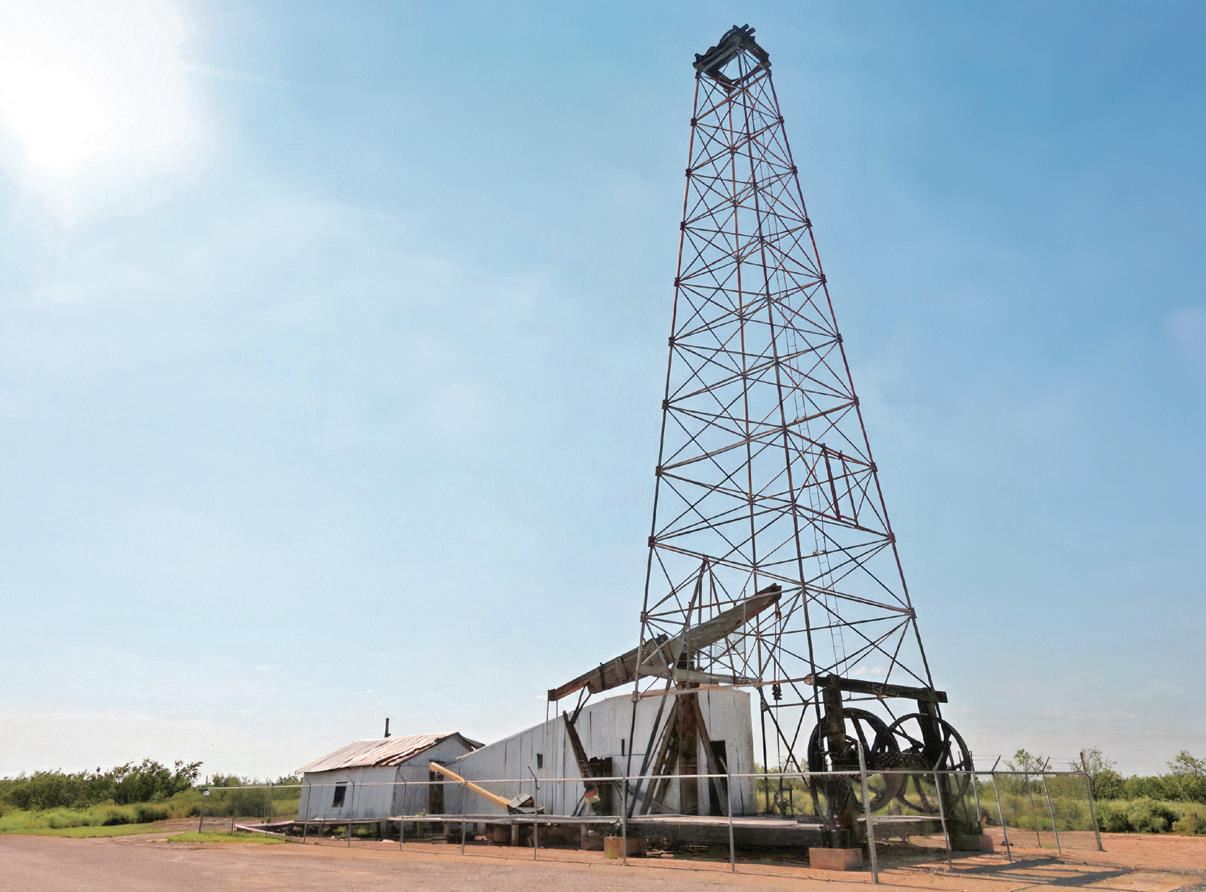
Oil and gas revenue also supports education in New Mexico. The Land Grant Permanent Fund (LGPF) was established in 1912, the year New Mexico became part of the United States. Currently, the LGPF provides $1 billion annually36 to New Mexico public schools, according to the New Mexico State Investment Officer. Students at community schools, colleges, and universities in New Mexico benefit from the LGPF’s annual support. The LGPF will contribute $1.3 billion to education in fiscal year 2024. In total, New Mexico’s permanent funds will provide $1.7 billion in earnings/benefits to citizens starting July 1, 202337.
In 2022, the oil and gas industry supplied $5.8 billion to the New Mexico state budget, up from $3.0 billion last year. Oil and gas make up 35% of the state’s budget 38. Total New Mexico education funding provided by oil and gas was $1.4 billion; more than one-third of the funding for New Mexico schools.

Our fiscal success will enable us to double down on the investments we know are working and explore innovative new strategies that move the needle and move New Mexico up in the rankings.”
GOVERNOR MICHELLE LUJAN GRISHAM, Carlsbad Current Argus39
The work being done on rigs in Eddy County is paying for schools and roads across New Mexico, and it is providing our nation with the opportunity for energy independence during a time when the need has never been greater.”
CARLSBAD MAYOR DALE JANWAY, Carlsbad Current Argus40

The Permian Basin generates and sustains thousands of jobs every year, providing support to families and local businesses, and driving economic growth across West Texas and Southeast New Mexico. Additionally, the economic force of the Permian creates a long-lasting ripple effect that weaves through all major industries and winds throughout the entire United States.
The Permian Basin has an outsized impact on the economies of Texas and New Mexico, contributing significantly beyond its size or proportion. Permian Basin counties in Texas represent just 1.6% of the state’s population, yet contribute up to 8.2% of Texas private-sector gross product. In New Mexico, Eddy and Lea counties only comprise 9.3% of the state’s population, but contribute 26.5% of New Mexico’s private-sector gross product.
An adequate workforce with the necessary training is essential to sustaining Permian Basin activity, as well as quality of life for the people of the area. The Perryman Group developed a detailed forecast of future employment by industrial category. The total demand for workers in the Permian Basin through 2040 is estimated to be over 190,900 (including growth and replacement needs). Engineers, technicians, electricians, mechanics, management, finance,
education, and heavy and light truck drivers, among many other occupations, will be needed for decades to come in the Permian Basin.
The Perryman Group estimates that, including multiplier effects, the total annual economic benefits of Permian oil and gas activity include $148.6 billion in gross product and 577,900 jobs in Texas, $22.1 billion in gross product and 135,300 jobs in New Mexico, and $181.8 billion in gross product and over 786,200 jobs across the United States.
As a result, supply chains and consumer spending are set in motion, running through every state and branching out into various industries, including agriculture, mining, utilities, construction, manufacturing, wholesale and retail trade, transportation and warehousing, information technology, financial activities, business services, and health services.
Looking to the future, the Perryman Group estimates the total economic impact of the Permian Basin will only continue to grow. Depending on the scenarios reflecting varying growth rates, oil prices, incentives, and climate policy, by 2050 the projected impact of the Permian Basin (in constant 2022 dollars and including multiplier effects) is estimated between $177.9 billion to $268.6 billion in gross product and 642,200 to 896,400 jobs in Texas (Permian and other regions of Texas). In New Mexico, estimates are between $26.8 billion and $40.5 billion in gross product and 158,600 to 221,400 jobs in New Mexico (Permian and other regions of New Mexico). Across the United States, the Permian’s impact is projected to reach between $215.7 billion to $325.7 billion in gross product and 870,300 to 1,214,000 jobs.
With history as a guide, the evidence is clear that the Permian Basin will remain a driving force in job creation and economic growth across the United States for many decades to come.

The Permian Basin stands out among energy producing regions for its vast oil and natural gas reserves, renewable resources, and long history of production—and 2022 was a banner year, with record production and revenue. In the face of complex global energy and geopolitical challenges, the Permian Basin remains a beacon of reliable, responsible, and clean energy leadership. The region holds immense potential, boasting reserves of 105 billion barrels of oil and 229 trillion cubic feet of natural gas. Notably, the Permian Basin produces low carbon oil, making it a cleaner and more environmentally friendly option compared to other major production areas. Moreover, the region has established a leadership position in wind and solar generation.
Oil, natural gas, and related industries contribute significantly to the private-sector gross product, accounting for approximately 8.2% in Texas and 26.5% in New Mexico, when multiplier effects are taken into account. The oil and gas sector in the region generates substantial tax revenue, both directly and through related business activities.

The Permian Basin has the natural resources necessary to secure America’s energy, economic, and national security for generations to come. However, to maintain this standing and realize its full potential, the region requires proactive investment in critical infrastructure. By improving road safety, enhancing healthcare quality, advancing educational institutions, and fostering increased commerce, we can support the people and economy of the Permian Basin, while benefiting residents across Texas, New Mexico, and the United States.
This has been an extraordinary year for the Permian, and the future is promising. Investing in the Permian Basin today ensures the region’s continued prosperity and represents a significant commitment to safeguard America’s future.
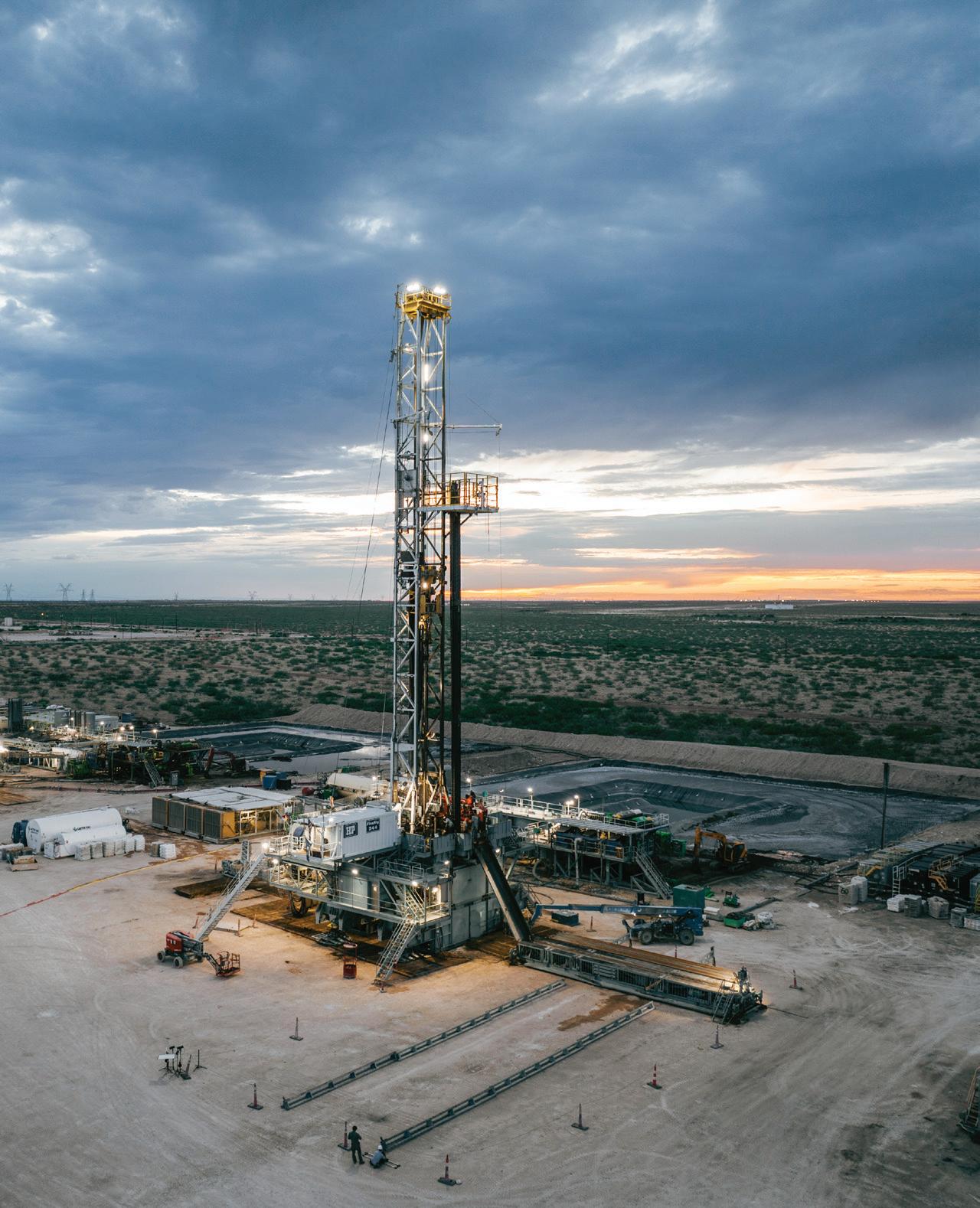
1 https://www.enverus.com/permian-basin/
2,3,4,5,6,7,8 Rystad Energy
9 https://www.census.gov/quickfacts/NM
10 Rystad Energy
11 “International Energy Outlook 2021.” U.S. Energy Information Administration, October 2021. https://www.eia.gov/outlooks/ieo/pdf/IEO2021_Narrative.pdf.
12 “Oil Industry CO2 per Barrel?” Thunder Said Energy, April 15, 2021. https://thundersaidenergy.com/downloads/oil-industry-co2-per-barrel/.
13 https://www.texastribune.org/2023/06/28/texas-solar-power-grid-heat-wave/
14 Rystad Energy
15 “Land-Based Wind Market Report: 2022 Edition.” U.S. Department of Energy, 2022. https://www.energy.gov/sites/default/files/2022-08/land_based_wind_market_ report_2022_data.xlsx.
16 “Land-Based Wind Market Report: 2022 Edition.” U.S. Department of Energy, 2022. https://www.energy.gov/sites/default/files/2022-08/land_based_wind_market_report_2022_data.xlsx.
17 Rystad Energy
18 Rystad Energy; Berkeley Lab, Utility-Scale Solar 2022.
19 “Texas Likely to Add Record Utility-Scale Solar Capacity in the next Two Years.” U.S. Energy Information Administration, April 21, 2021. https://www.eia.gov/ todayinenergy/detail.php?id=47636. https://www.reuters.com/default/texassolar-boom-turns-battery-dash-grid-pain-looms-2023-03-15/
20 “The US Wind Turbine Database,” (n.d.). https://eerscmap.usgs.gov/uswtdb/.
21 “Electricity Data Browser.” U.S. Energy Information Administration. Accessed April 14, 2023. https://www.eia.gov/electricity/data/browser/#/topic/0?agg=2,0,1&fuel=g0c1&geo=g0000000021&sec=g&freq=A&start=2001&end=2021&ctype=linechart%3Cype=pin&rtype=s&maptype=0&rse=0&pin=.
22 Rystad Energy
23 https://www.permianroadsafety.org/wp-content/uploads/2023/03/YTD-FatalitiesAll-Permian-1-1-thru-12-31.pdf
24 The Perryman Group
25 Financial Statement and Independent Auditor’s Report, Permanent University Fund, Years Ended August 31, 2022 and 2021, Texas Comptroller of Public Accounts, and The Perryman Group.
26 The Perryman Group
27 The Perryman Group. The severance taxes for the Permian Basin in Texas were estimated based on an allocation of total severance taxes to the region using production data based on data from the Texas Comptroller of Public Accounts and Railroad Commission of Texas.
28 https://www.sic.state.nm.us/investments/permanent-funds/severance-taxpermanent-fund/
29 https://www.nmoga.org/benefits
30 https://www.nmoga.org/benefits (same source)
31 https://www.utimco.org/funds-managed/endowment-funds/permanentuniversity-fund-puf/
32 https://www.utimco.org/media/3939/2022-puf-audited-financial-statements.pdf
33 https://utsystem.edu/sites/default/files/documents/report-state/2022/ available-university-fund-report-fy-2022/ut-system-fy-2022-auf-report.pdf
34 https://news.utexas.edu/2019/07/09/regents-make-ut-austin-even-moreaffordable-2/
35 TXOGA
36 https://www.sic.state.nm.us/investments/permanent-funds/land-grantpermanent-fund/#:~:text=The%20Land%20Grant%20Permanent%20Fund, specialty%20schools%20and%20other%20beneficiaries
37 https://www.sic.state.nm.us/investments/permanent-funds/land-grantpermanent-fund/#:~:text=The%20Land%20Grant%20Permanent%20Fund, specialty%20schools%20and%20other%20beneficiaries
38 https://www.nmoga.org/benefits
39 https://www.currentargus.com/story/news/2022/12/16/oil-gas-drivesbillions-funds-new-mexico-next-year-permian-basin-fossil-fuel-legislaturegovernment/69721648007/
40 https://www.currentargus.com/story/news/2022/07/15/oil-gas-new-mexicorevenue-permian-basin-energy-eddy-lea/65373100007/
When we work together, we achieve a far greater impact than we can alone. The Permian Strategic Partnership is a unique alliance between 20 leading energy companies: Apache, BPX Energy, Chevron, ConocoPhillips, Coterra Energy, Devon Energy, Diamondback Energy, Endeavor Energy Resources, EOG Resources, ExxonMobil, Halliburton, Helmerich & Payne, Kinetik, Occidental Petroleum, Ovintiv, Permian Resources, Pioneer Natural Resources, Plains All American Pipeline, SLB, and WaterBridge Resources. Individually, each of our member organizations is a strong contributor to our global energy economy, and our local communities. While we are technically competitors, we choose to work together toward a common goal: to make a lasting impact in the Permian Basin.
With its vast reserves, the region has the potential to improve energy security for decades—but to keep pace with growth, investment in infrastructure is critical. Founded in 2018, the Permian Strategic Partnership focuses on addressing challenges to the responsible development of the Permian Basin in New Mexico and Texas. By fostering superior schools, quality healthcare, safer roads, a trained workforce, and affordable housing, we can strengthen the Permian today, and ensure its success well into the future.
Apache
BPX Energy
Chevron
ConocoPhillips
Coterra Energy
Devon Energy
Diamondback Energy
Endeavor Energy Resources
EOG Resources
ExxonMobil Halliburton
Helmerich & Payne
Kinetik
Occidental Petroleum
Scan to sign up to receive PSP’s quarterly newsletter or weekly news clips.
Ovintiv
Permian Resources
Pioneer Natural Resources
Plains All American Pipeline
SLB
WaterBridge Resources





